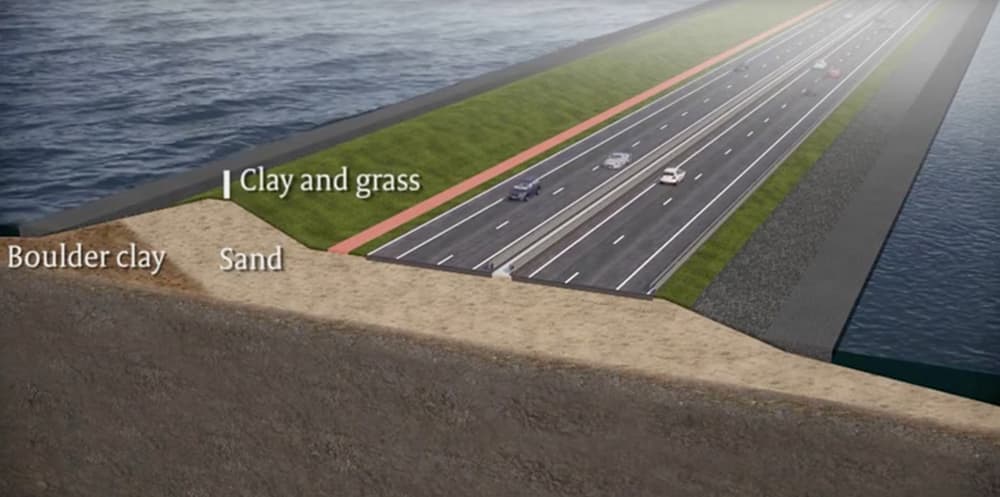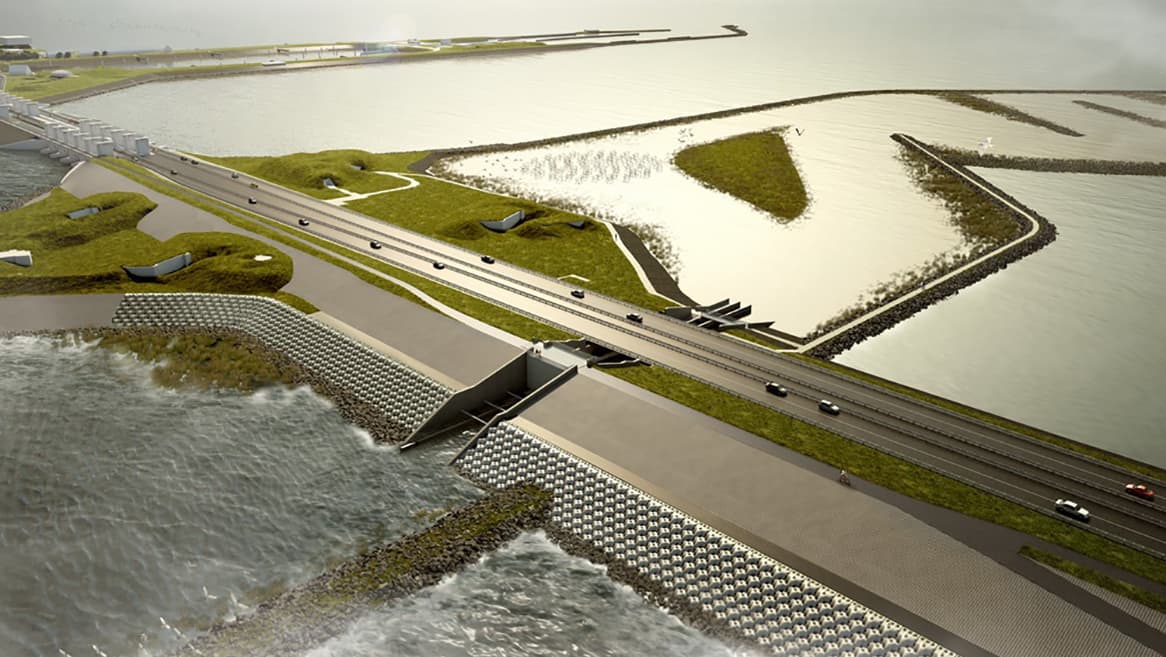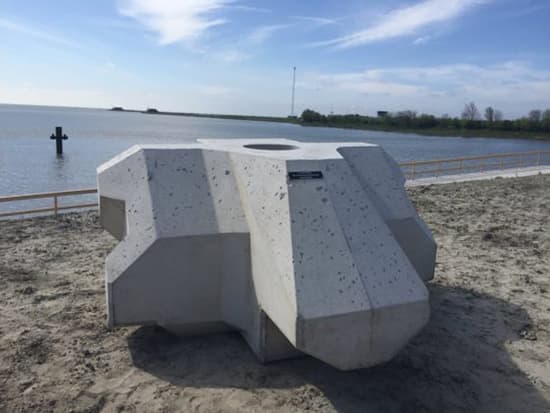Reinforcing Europe’s Longest Dam
- Youtube Views 4,296 VIDEO VIEWS
AFSLUITDIJK, the longest dam in Europe, is currently being reinforced by Dutch engineers to withstand stronger storms and higher sea levels as a result
of global warming.
Built between 1927 and 1932, the 32 kilometre (20 mile) long dam encloses Zuiderzee, a major Dutch sea inlet. This protected the country’s hinterland,
and enabled further land reclamation in the enclosed basin.

Above: The Afsluitdijk is the longest dam in Europe and protects much of the Dutch hinterland from flooding (image courtesy of Royal BAM Group)
Although the dam has so far withstood all of major storms it has faced, the capacity of the floodgates has been deemed insufficient due to rising sea levels and increased river discharge into the now-closed basin.

Above: A diagrammatic section of the dam showing the relatively weak sand layer resting on a layer of boulder clay (image courtesy of Rijkswaterstaat).
The inner slope of the dam was built of sand on a foundation of boulder clay.
During particularly strong storms, waves could crash into these walls and over the top of the structure, weakening it and in extreme cases leading to its partial collapse.

Above: The proposal to strengthen the dam includes a new protective concrete cover to be built on top of the existing embankment ( image courtesy of X-Bloc)
In order to prevent this, engineers have devised a plan which will cover the existing structure with a new, corrosion-proof layer of concrete blocks. These can later be covered in a layer of topsoil and vegetation, preserving the dam’s established ecosystem.

Above: A render showing the bare concrete elements that will protect the structure in case of a 10,000 year storm (image courtesy of Y-Bloc).
Now, Dutch contractor BAM has finished placement trials of the new concrete blocks.
Both the blocks, as well as the clamp used to position them on the body of the dam are recent innovations, aimed at making the job faster and more cost-effective.

Above: 75,000 of these precast concrete elements, which are 15% lighter than comparable armour units, will be used to strengthen the lower portion of the Afsluitdijk (image courtesy of Y-Bloc).
Called X-BlocPlus, these prefabricated structures are 15% lighter than comparable armour units.
Together with the new clamp system, they can now be positioned by a single operative, making work faster and safer.

Above: The system has been successfully trialled earlier this year and construction on the dam will start at the end of 2018 (image courtesy of Royal BAM Group).
The outermost layer of the dam will be covered with 75,000 of these units, and will be transported to the site by ship.
Work is scheduled to start later in 2018.
Comments
Next up








